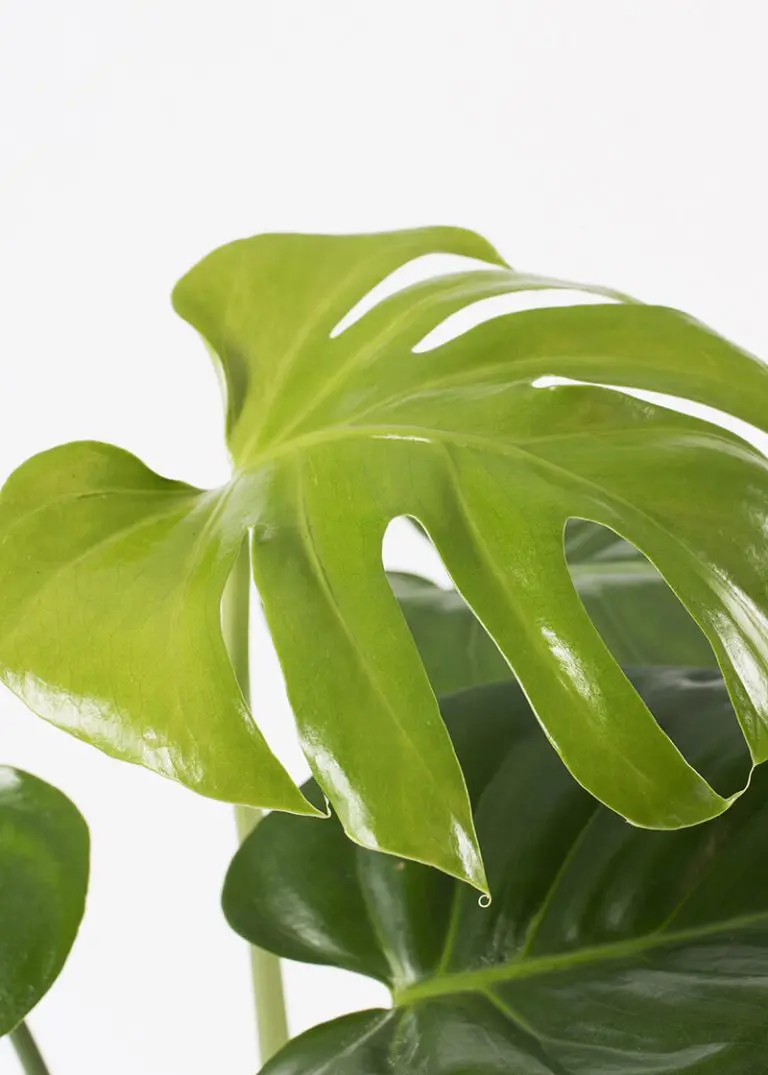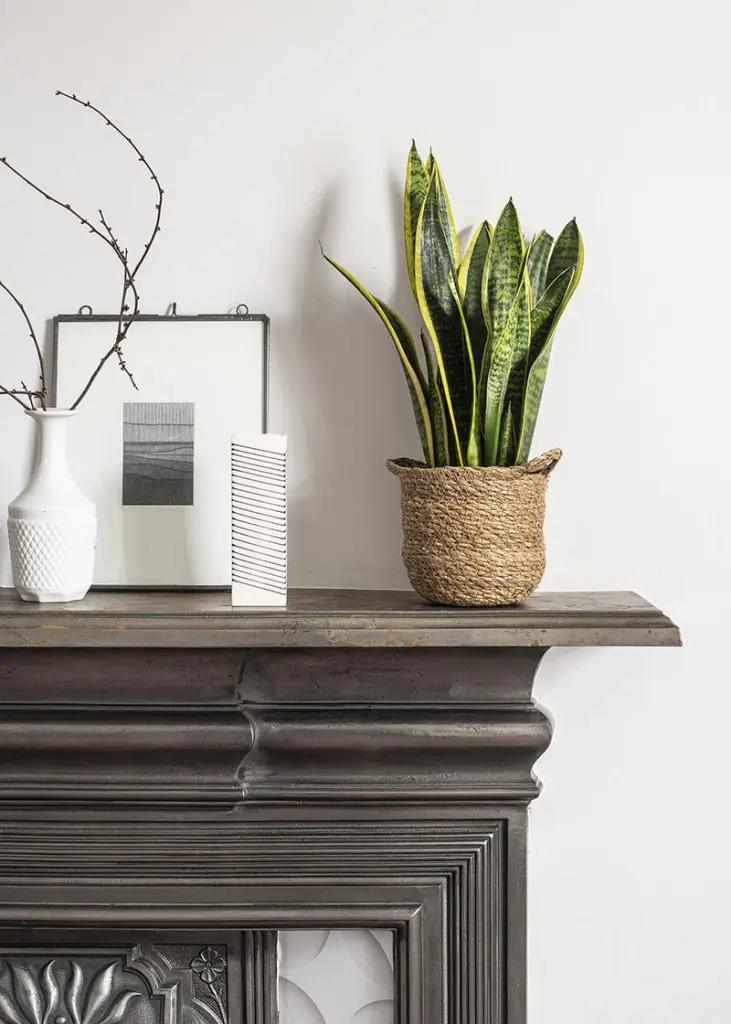
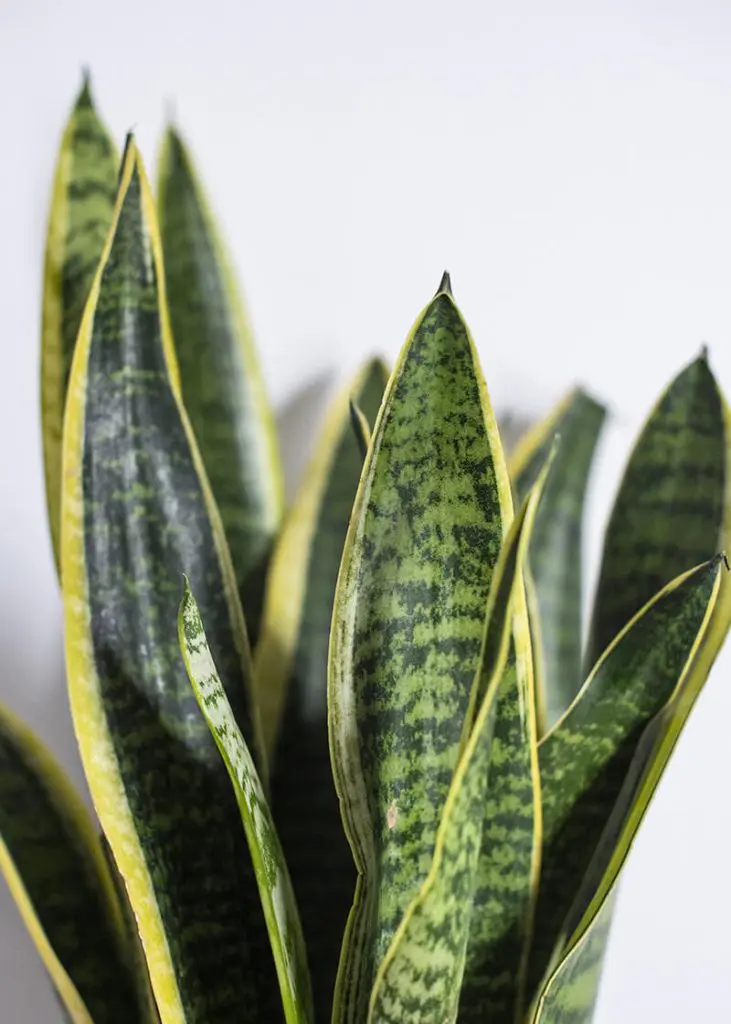
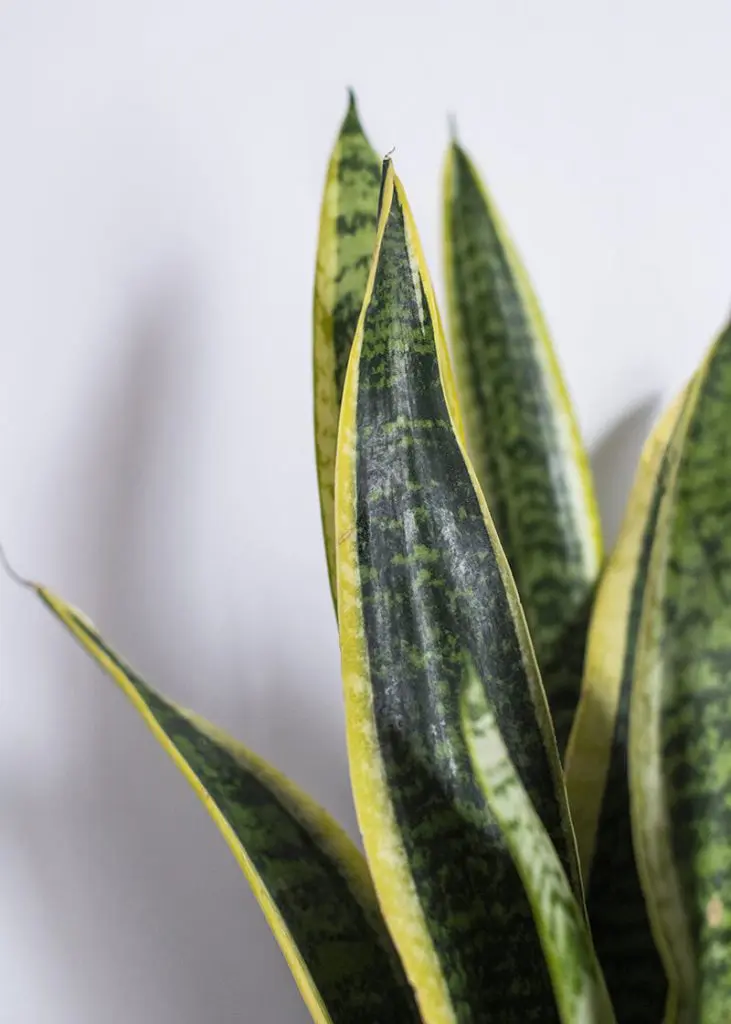
Sansevieria trifasciata ‘Laurentii’ is most commonly known as the Snake Plant.
Latin name
Sansevieria trifasciata
Pronunciation
(san-sev-ee-AIR-ree-ah try-fas-SEE-ah-tah)
Common name
Snake Plant, Mother-in-laws Tongue
Origin
Southern and western Africa
Sansevieria trifasciata ‘Laurentii’ is a striking upright plant with long, leathery, sword-shaped leaves that emerge in clumps from underground rhizomes. Its leaves are boldly variegated with yellow edges and grey-green banding, and can reach up to 1 m in length. Although the plant occasionally produces small, simple, fragrant white flowers, these are rare and not its main feature.
This species is one of around seventy formerly grouped under Sansevieria but now classified as Dracaena. All are evergreen perennials native to the semi-deserts of southern and western Africa. Traditionally, their strong leaf fibres have been used to make ropes and bowstrings for musical instruments.
Did you know?
Snake Plants contain saponins, natural chemicals that make them mildly toxic if eaten. They can cause nausea, vomiting, or diarrhoea in pets and humans, so it’s best to keep them out of reach of cats, dogs, and small children.
caring for your plant

Light
It will tolerate low light levels. Direct sunlight causes bleaching of the leaves. Will also tolerate dry atmospheres.

Watering
Little water required. The compost should be allowed to dry out between watering.

Pruning
Do not prune, although the plant can be divided when large

Feeding
A little dilute fertilizer added to the water will be all that is necessary

pest & diseases
Occasional mealybugs, which can be removed when cleaning the leaves with a damp cloth
Where the Snake Plant originates from

This species originates in the tropics of West Africa, and has been introduced into El Salvador
Our plants are grown in Ecoponic, an alternative to soil. Officially known as a vulkaponic substrate, it replaces traditional compost with a clean, mineral-based medium that helps protect peatlands.
According to the IUCN UK Peatland Programme, “A loss of only 5% of UK peatland carbon would be equal to the UK’s annual greenhouse gas emissions.” As well as storing carbon, the natural wetlands where peat is found are critical to the survival of plants and wildlife. Ecoponic also improves plant health and uses water more efficiently.
Find out more about Ecoponic here.

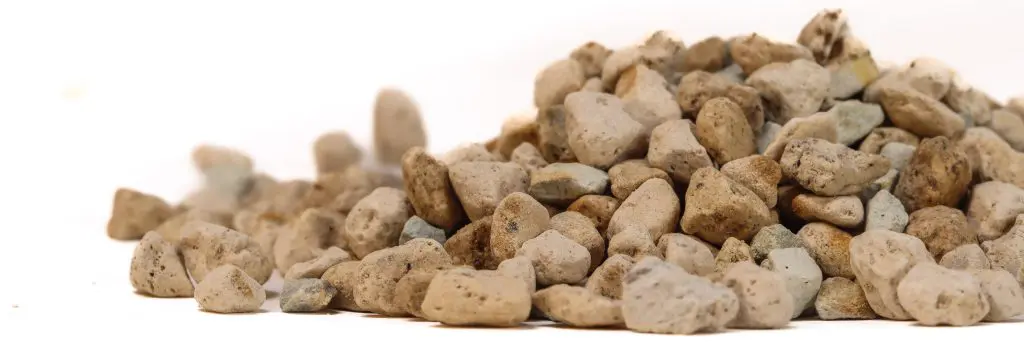
Buy one of my cousins from the nursery
Did you know?
Plantopedia is brought to you as part of our Engage & Bloom workplace experience program.
explore more
Why not continue your journey through the plant world. Explore more plants, their stories, habitats and the benefits they bring to spaces.





















